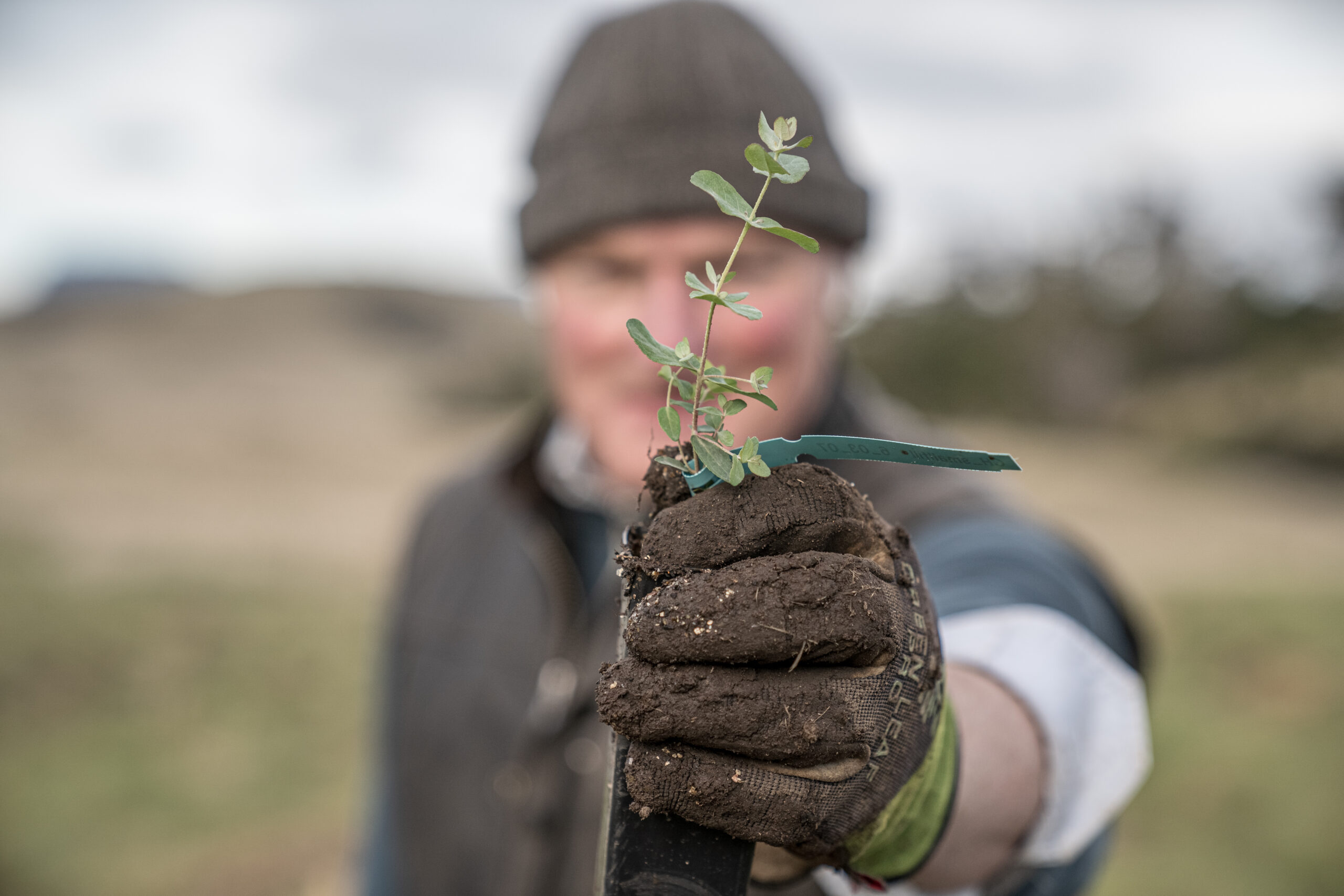From reports of new fish species turning up in Tasmania’s waters to changing bird distributions across northern and eastern Australia, plants and animals are on the move as the places they once called home become inhospitable due to a changing climate. But what happens when species can’t walk, fly or swim to pastures new?
In two isolated pockets in the South Arm region just out of Hobart, there’s a species of eucalypt unique to Tasmania that is hanging on by the slimmest of margins. Morrisby’s gum, one of Australia’s most threatened eucalypt species, is facing a barrage of threats including increasingly dry conditions, low genetic diversity, a small population of adult trees and excessive browsing by mammals and regular attack by pest insect. From a population of around 2,000 mature trees in 2006, there are fewer than 50 adult trees remaining today.
Over several years, a strong partnership between NRM South and Enviro-Dynamics has delivered key actions to protect, manage and restore Morrisby’s gum in southern Tasmania. NRM South and Enviro-Dynamics have been working with partners through an Australian Government-funded project to protect these plants from browsing, protect established seed orchards, increase genetic connectivity of remnant patches, and improve the overall genetic diversity of the seed bank.
However, there’s one threat that existing stands of Morrisby’s gum can’t be protected from – the increasingly warmer and drier conditions affecting their once-ideal habitat. With such rapid and significant impacts to the remaining population, natural migration is no longer possible. It is now only through direct intervention that this threatened eucalypt has any hope of survival.
Sophie Golding, a Senior Project Officer with NRM South, explained how this aspect of the project was being developed; ‘Researchers at the University of Tasmania came up with a model to identify the species’ future climate range and four sites within this range have been selected to establish new plantings. We’ll be working with Enviro-Dynamics and the University of Tasmania to plant 3,240 Morrisby’s gum seedlings at these sites over the next few months alongside a few other plant species that they would naturally grow alongside’.
With University of Tasmania researchers and students monitoring these new conservation plantings for years to come, this work will help improve prospects for the species, and increase knowledge on effective assisted migration of eucalypt species more broadly.
This project is supported by NRM South through funding from the Australian Government.
-ENDS-
